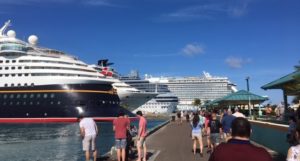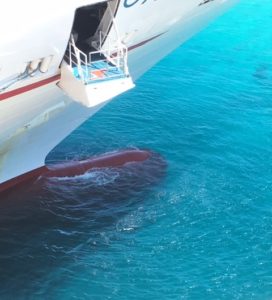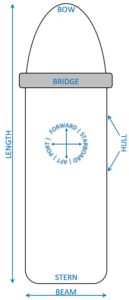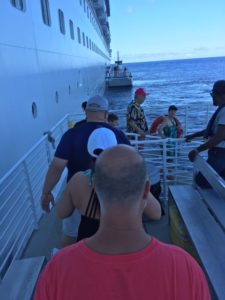Whether you’re a sailing expert or haven’t been on a cruise ship yet, you may have heard that there’s a different language used at-sea. Here’s a glossary of terms used in the nautical world that may differ from those on-land. Some of them are so out-landish that I dug a little deeper into the meaning to get a better understanding of the term’s background.
I’ve categorized the terms so they can make a little more sense. Hope you enjoy the read below:
The Ship – Direction
FORWARD- The area of the ship forwards the front, usually in front of the middle area of the vessel.
- This is the area towards the rear of the ship, usually behind the middle area of the vessel.
- As the ship travels forward, this is the word used to describe the right side of the vessel. When observed at night, it is denoted with a green light. The term was derived from the old steering oar or “steerboard”, which preceded the invention of the rudder.
- This word is used to identify the left side of the ship as it travels forward. If seen at night, it is denoted with a red light. The term was introduced before ships had rudders on their centerlines. The steering oar was on the right side of the vessel since most people are right-handed so when the ship would dock at a wharf, they would refer to this side as the “port” side of the ship. It was formerly referred to as larboard which became challenging to be able to distinguish from starboard which is what ordered the change in its name. While on your next sailing, if you ever get confused about which side is port, thing of right versus left. The word “left” has 4-letters, and so does “port.”
The Ship – Location

- The front-end of the ship
- This refers to the rear part of the ship. The stern is opposite of the bow (the foremost part of a ship). Originally, it referred to the aft port section of the ship, but was eventually changed to the entire back end of a vessel. When travelling at night, it is indicated by a white navigation light.
- The area above the weather deck which extends the full width of the ship. It houses the command center.

- A protruding bulb at the bow of the ship which is just below the waterline. It modifies how the water flows around the hull thus reducing drag and increasing speed, range, fuel efficiency and stability.
- The outermost layer and the main framework that the ship relies on the stay afloat.
Units of Measure

- Measurement of the vessel’s total length from Bow to Stern.
- The widest measurement of the vessel.
- The depth that the bottommost part of the ship (the keel) reaches below the waterline.
- The unit of speed equivalent to 1 nautical mile per hour. This was determined up until the mid-19th century using a wooden panel, attached by line to a reel, and weighted on one edge to float perpendicularly to the water surface creating resistance to the water moving around it. This was called a chip log and it would have been cast over the stern of the moving vessel and allowed the line to pay out. There were knots tied at a distance of 47 feet 3 inches from each other, and as they were passed through a sailor’s fingers, another sailor would use a 30-second timer to record the amount of time that had passed. At the end of the timer, the amount of knots that passed along would be reported and used in the sailing master’s books. (1 Knot = 1.15078 mph, or 1.852 km/h)
- The unit of length that corresponds approximately to one minute of arc of latitude along any meridian arc. 1 Nautical Mile is equivalent to 1.15 miles or 1,852 meters. The derived unit of speed is the knot, one nautical mile per hour.
Other Terms
LIST- The angle at which a vessel leans or tilts to one side. Typically occurs due to large swells of water, improper balance, flooding onboard.

- When a ship is unable to tie up at a dock, due to various circumstances, additional services may be implemented to carry passengers and crew ashore. The best way to facilitate this is through the use of smaller vessels, and in some cases, lifeboats. On cruise ships, lifeboats offer two services, one where they act as a lifeboat in the event of a water emergency, and the other as means of carrying passengers to the shoreline when the ship can’t dock at a pier. When traveling on a smaller vessel, their tenders will be referred to as dinghies.
- An opening in the side of the ship, above water level, to allow passengers to board or leave the ship at a pier.
- An exercise in which passengers are required to participate upon sail-away. It includes instructions on how to safely evacuate the ship in the event of an emergency on board.
- The specific location on the ship where passengers and crew gather for the muster drill or during an emergency. If a person has gone missing during a sailing event, all passengers may be required to report to the muster station for a head count.
Conclusion
Now that you are a sailing professional, it’s time to book your next cruise! Let’s hope that the ships will start welcoming passengers in the U.S. soon so you can test your new-found knowledge.

2 thoughts on “Weekly Wednesday – Nautical Terms”